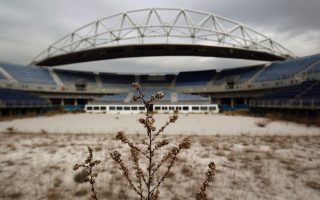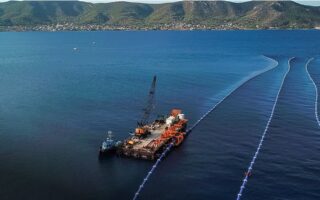Bulldozers, cameras and accountability

A bulldozer is a statement of determination; it is even reassuring somehow when it appears in a news story on our television screens. It is a statement that the laws of the land are being upheld, whether it is demolishing illegal constructions or removing trash and debris from our streams and culverts. Its presence lends gravitas and authority to the occasion; it is one of the essential props, like the reflective vests and hardhats, of a politicians’ visit to any worksite.
One was, of course, in the background when the regional governor of Attica, Nikos Hardalias, visited the Marathon stream on Friday to check on the progress of clearance work being carried out there, and confirmed our fears: “No, Attica is not protected,” he stated, referring to the coming winter. He also pointed out the obvious, saying that “if we want results, the game of hot potato has to stop over which streams are the regional authority’s responsibility, which are the municipal authorities’ and which are the Infrastructure Ministry’s.”
Just a few weeks ago, a great hoo-ha was made over a project to clean the Kifissos River, one of the capital’s main runoff channels. We also heard that it had been decades since a similar effort had carried out. We were treated to live images of what was described as “Attica’s biggest sink” and what we saw was a massive, stinking dump packed with debris from construction sites, trash, tree trunks, dead animals and who knows what else.
Yet in October last year, the former regional governor for Attica, Giorgos Patoulis, had assured the public that “Kifissos, being a river, cleans itself and has never presented any problems with blockages because of large objects on its bed.” Nevertheless, he added, when obstructive objects – including cars – had been located during regular, smaller-scale cleanups, they were removed, “in order to avert any dangerous effects.”
Who are we to believe? The fact is that climate change is here and such dilemmas will not make it go away. Neither will publicity stunts for the cameras. People are anxious and they are scared, and they know that keeping the streams that keep the capital from drowning clear is an almost Sissyphean task. Seven years have already passed from the deadly flood in the West Attica town of Mandra (when Rena Dourou was regional governor), which was due, in a great part, to the overflow of blocked streams.
So what are we to believe? Beyond the bulldozers and all the other trappings, we can only believe in the truth that Hardalias shared with us: “Attica is not protected.” Which begs the question: When we acknowledge a truth, do we also acknowledge responsibility for it?





